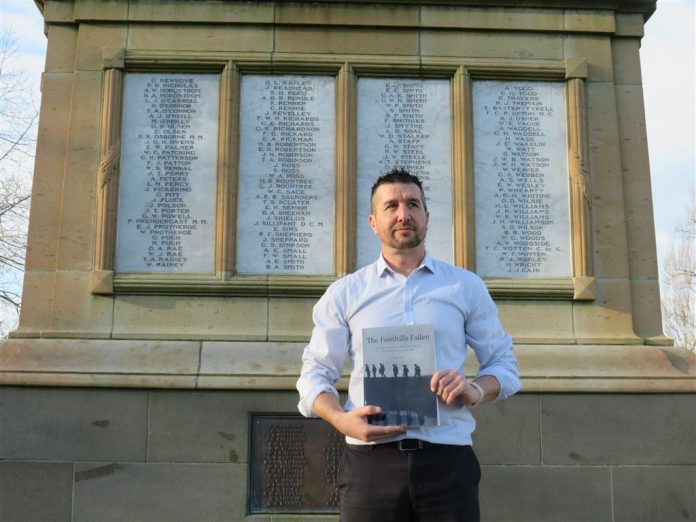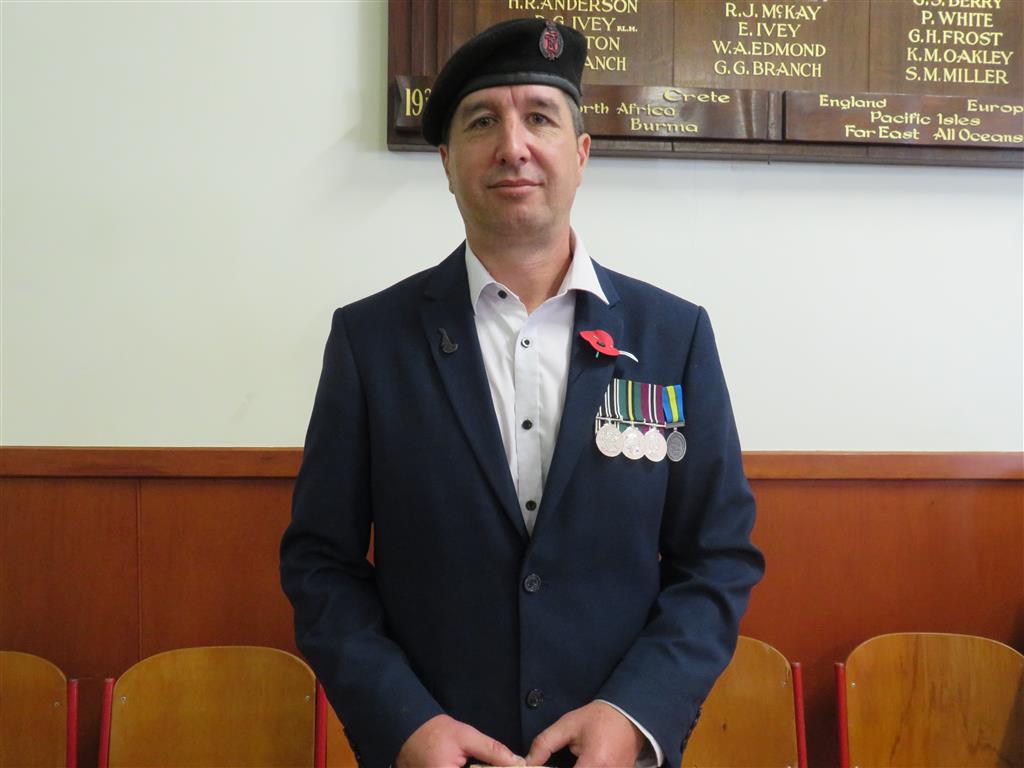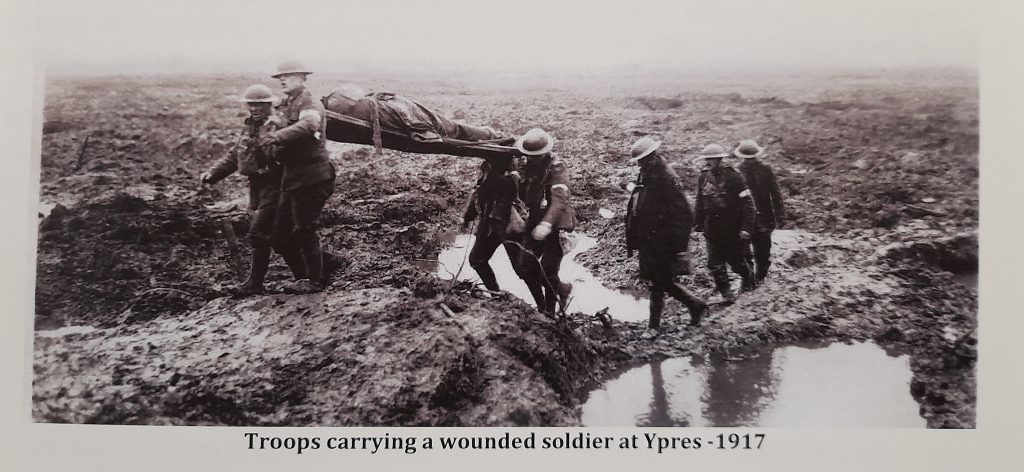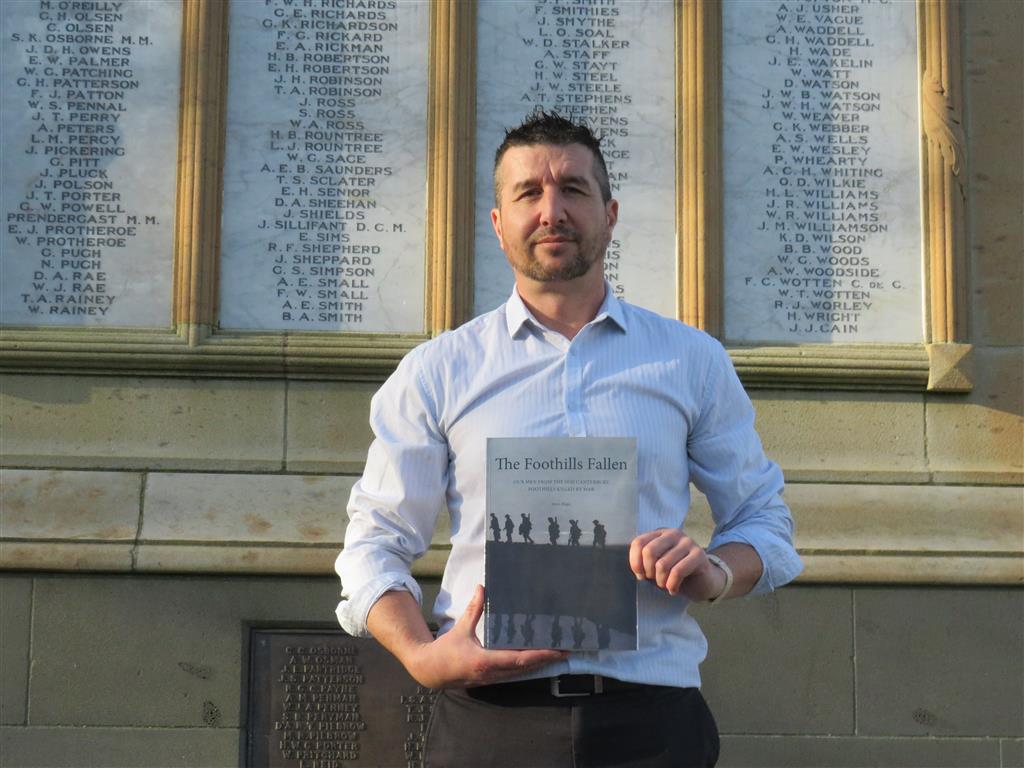
On walls in many community halls around Mid Canterbury, Roll of Honour boards hang with names embossed in gold, commemorating comrades killed in war.
Now those fallen heroes from one part of the district have been brought to life in a new book – they have become men with faces, lives and stories told.
The Foothills Fallen has been written by Anama’s Reon Blake.
Blake said each year on Anzac Day in the Mayfield Hall he and fellow attendees would look at Roll of Honour names, featuring an initial and surname.
‘‘But they did not have their full names there, we knew little about them as individuals who had fought and died for us,’’ Blake said.
From the foothills area – Ealing, Carew, Alford Forest, Westerfield, Maronan and the Ashburton Lakes District – 110 men lost their lives as result of serving their country .
As someone who has donned a uniform to help restore peace and order in another country, Blake knows the importance of remembering these men.
He has twice deployed for tours of duty with New Zealand Police in the Solomon Islands after ethnic tensions there in the early 2000s.

With time on his hands during lockdown, Blake set out to find out more about the 110 men.
‘‘So who were they and what were their stories? What did they look like and how different were their lives to ours today?’’
Blake originally set out to put together a pictorial roll of them.
‘‘I have photos of 105 and the five missing ones are immigrants from the United Kingdom and may be the end of the line in their families.’’
He achieved his goal and the resulting pictorial Roll of Honour was shown at an Anzac Day service.
He then decided to put together a book.
Each of the 110 men have three pages for their story.
‘‘It was important for me that they were all treated equally. For some I could find lots of information, for others there was limited information to be found.’’
The earliest story is of David Patton from Mt Somers who fought in the Boer War and the most recent story is Daniel Hay from Mayfield who fought in the Vietnam War.
While Hay returned to Mid Canterbury, he died as a result of his war service and his exposure to Agent Orange.
The majority of stories are of those who died as a result of serving in World War 1 and 2.

Blake said in doing the research he could clearly pick up on the difference between World War 1 and 2.
Those who fought in World War 1 were of lighter physique, living on less, and worked in manual jobs and the agricultural sector.
By the time of World War 2, times were more prosperous, they had heavier physiques and worked across a variety of fields such as working for PGG, Wrightsons or in banks.
Blake’s research led him to understand those who fought in World War 1 did it for the adventure, but also for God, King and Country.
By World War 2 it was seen more as an adventure or to ‘‘knock a few Germans off’’.
One of several stories that stood out for Blake was of John Johnston from Mayfield who fought in World War 1.
‘‘On the 20th February 1915, Johnston along with two fellow soldiers wrote a message placed it in a bottle and threw it overboard, it was found almost two years later at the Manawatu Heads.’’
What made this notable was despite not being Māori, Johnston had begun the message in te reo.
One of the biggest things Blake did from writing the book was help families to learn more about their relatives including those who didn’t know the family member had served.
Over 1000 hours of research has gone into it over the last three years.
His research has been thorough.
He has dug through archives, trawled the internet, made contact with relatives and spent countless hours in libraries and dusty vaults searching for answers.
Blake visited the New Zealand Defence Force at Trentham to physically obtain some of the records to be used to write the stories.
When Blake received the book from the publisher, he felt relief it was finished.
‘‘It’s a living document that puts a face to every name and tells the story of each man. Where they came from, their families, how they enlisted, their deployments, struggles and ultimately how their young lives were cut so abruptly short.’’
It’s more than just a Roll of Honour.
‘‘It’s so the thriving community walking the same streets as these men once did, can learn about their lives, look into their eyes and remember them.

‘‘It’s really important to me that this book is treated as a living document, one that can be updated when new information comes to hand or amendments need to be made.
‘‘I want each of the men to be treated equally and fairly and hope it generates interest among the community so that any new information is received for future editions,’’ he said.
All the stories in the book are of those who died as a result of their service. Of the 110 men whose stories are in the book, 103 of them are buried overseas.
● The Foothills Fallen is $75 and available at Community House 44 Cass Street Ashburton, Overflow in Mayfield, the Staveley Museum and Staveley Store in Staveley, Joosh in Geraldine and Paper Plus Ashburton.
Proceeds will go into running the Mayfield and Districts Red Poppy Society Anzac and community events for years to come.



